Сreating a new exchange from scratch can be quite challenging and time-consuming. White label crypto exchange software provides an effective solution, enabling businesses to introduce their own platform within a matter of weeks without needing to develop it in-depth or invest much capital.
The pre-developed software enables businesses to rebrand and tailor the platform to meet their needs, offering a faster, more affordable entry into the market. The main advantages of such out-of-the-box solutions include decreased setup time and cost reduction for launching your own crypto exchange.
What is a white label cryptocurrency exchange?
A white-label crypto exchange is a pre-built platform that enables businesses to quickly deploy their own cryptocurrency exchange with minimal development effort. These solutions come with essential features such as trading engines, order matching, and wallet integration. All these features can be branded and customized to meet a business’s requirements and branding.
Why is it worth using a white label solution for crypto exchange development? Building a crypto exchange from the ground up with basic features would typically take 8-12 months, and more advanced platforms could take 16 months or longer.
However, with a white-label offering by Peiko, businesses can have an operational, pre-made platform online in 3-6 weeks.
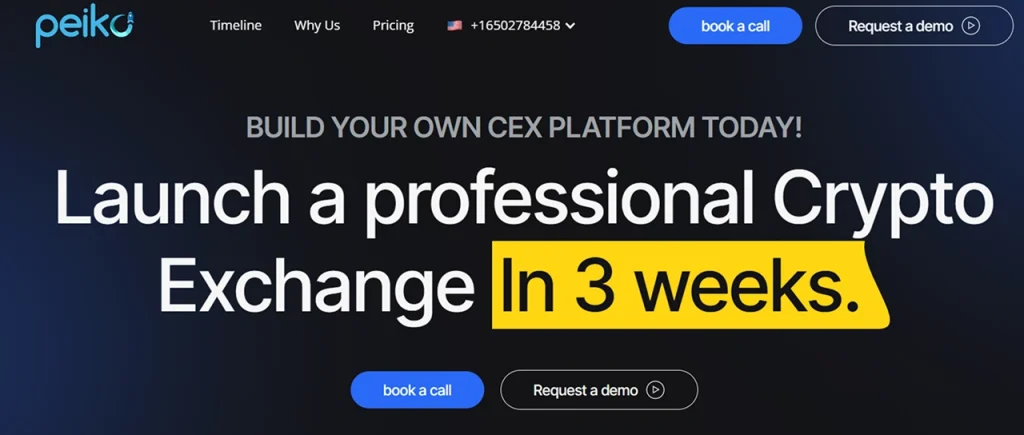
Also, the cost difference between launching a crypto exchange from scratch and using an out-of-the-box solution is significant. If the first variant may cost more than $500,000 depending on features, the second option will cost you just around $90,000.
In general, the most significant benefits of a white label centralized exchange are the development speed and cost advantages.
Architecture of white-label crypto exchanges
Let’s consider the essential features of white label software.
1. Core infrastructure
The core infrastructure includes the fundamental components that ensure the seamless, safe, and efficient operation of a crypto exchange platform.
- Trading engine Processes order matching and trade execution in real time.
- Wallet system Manages hot and cold wallets to securely hold digital assets.
- Liquidity integration Aggregates liquidity from multiple sources to offer stable price and volume.
- Security A white label cryptocurrency exchange features robust encryption, multi-signature wallets, and frequent security audits.
2. Customization options
White-label crypto exchanges come with a set of customizable features that allow businesses to tailor the platform according to their brand and user needs.
- UI/UX (user interface/user experience) Fully customizable user interface to accommodate a company’s branding and user experience.
- Trading features Triggers like margin trading, advanced charting, and staking can be added.
- Payment gateway Features a broad range of fiat-to-crypto payment methods.
- API access For third-party services like trading robots or analytics portals to connect to.
3. Compliance and regulatory tools
White-label platforms should be pre-equipped with the regulatory tools like SumSub needed for adhering to legal stipulations and for combating financial crimes.
- KYC/AML Combined tools for identity verification (know your customer) and anti-money laundering compliance.
- Transaction monitoring Tracks and alerts suspicious activity to meet regulatory requirements.
- Audit trails Keeps detailed records for transparency and auditing.
4. Platform management
These tools allow businesses that choose to buy white-label solutions to manage the operational aspect of their crypto exchange efficiently.
- Admin dashboard Single point of management interface for managing platform operations and administering user accounts.
- Risk management Monitors trading activity and adjusts limits based on market conditions.
- Analytics Real-time analytics into platform performance and user activity.
Below, you can see an example of white label centralized crypto exchange software architecture.
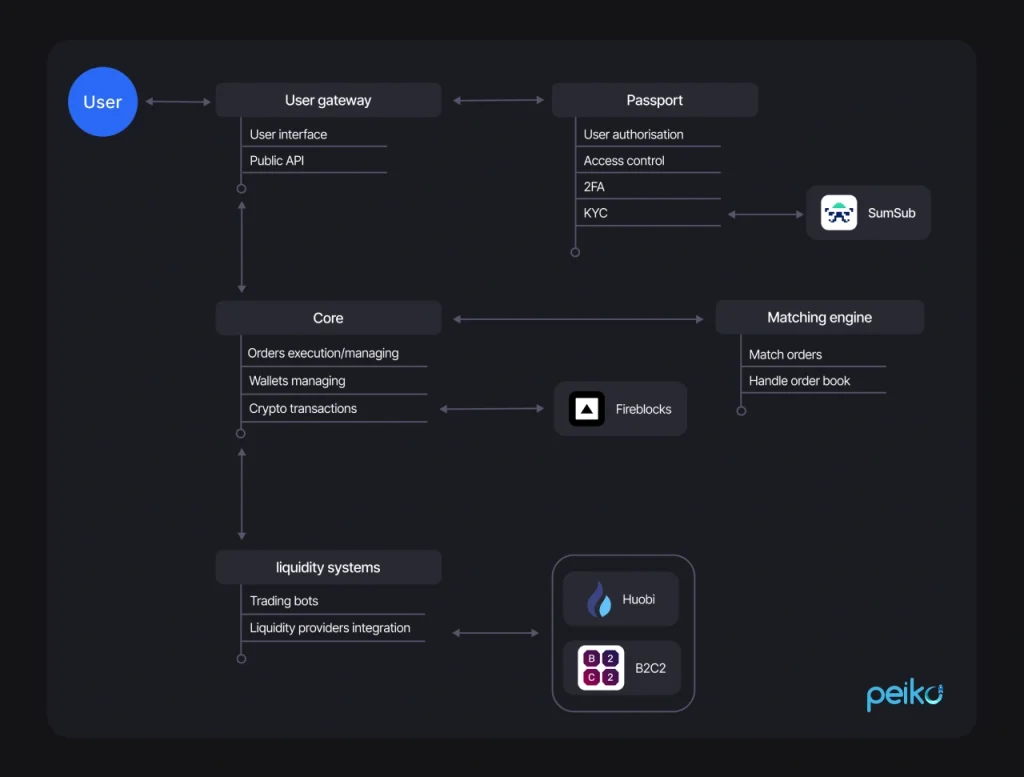
How does a white label exchange work?
Let’s take a step-by-step look at what happens from the beginning when you purchase such a white label solution.
Initial consultation and personalization
After purchasing the white-label solution, firms collaborate with the provider. It is important to define branding, user interface preferences, as well as individual functionality needs. The platform is next customized to meet these preferences.
Platform deployment
Once the customization process is complete, the exchange platform is hosted on a secure server or cloud infrastructure to ensure optimal performance and uptime. The company is given access to the admin dashboard so that they can run and manage the exchange effectively.
Liquidity and payment gateway integration
The white label exchange platform is linked to liquidity providers, ensuring adequate trading volume and stable prices. Fiat-to-crypto payment gateways are also set up, allowing users to receive and send funds without any complications.
Compliance configuration
KYC and AML procedures are implemented to validate user identities and ensure regulatory compliance. Transaction monitoring software is also integrated to flag suspicious activities and keep the platform in a manner consistent with the law.
Day-to-day operations
The provider handles back-end operations like maintenance of the platform, software, and ongoing security monitoring, while the company focuses on customer acquisition, marketing, and support.
Ongoing support and maintenance
The white-label provider offers round-the-clock technical support to address any operational challenges. Regular software updates, security patches, and optimizations are implemented to keep the platform secure and running smoothly.
Key features to look for in a white label provider
The following-listed features and considerations are essential while evaluating providers for your platform:
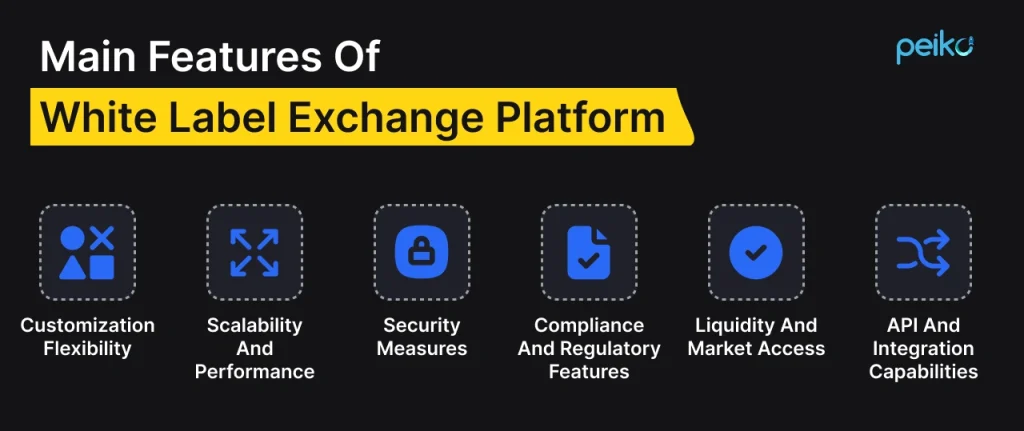
Customization flexibility
Ensure that the platform offers comprehensive UI/UX customization features to suit your branding. This includes design flexibility in color schemes, logos, and page layouts.
You should be able to selectively add or remove sophisticated trading features (like margin trading, staking, and futures) on a good provider.
Scalability and performance
The platform has to be built on a scalable infrastructure. This includes using cloud-based solutions, decentralized storage, and load-balancing to optimize availability and fault tolerance.
Except this, traders demand performance. There needs to be an efficient low-latency trading engine to facilitate smooth and speedy order matching.
Security measures
There should be multi-signature crypto wallets and cold storage solutions such that user funds remain safe from online attacks and hacking. The platform needs to have end-to-end encryption, particularly for personal as well as financial data. Two-factor authentication (2FA) is also essential.
Compliance and regulatory features
A white-label solution needs to have built-in KYC and AML tools so your exchange is in regulatory compliance with global requirements. Monitoring of transactions in real-time is required for the detection and flagging of suspicious transactions.
Liquidity and market access
The platform must facilitate liquidity aggregation from various sources so that the platform will have a deep market and stable prices. This avoids slippage and seamless trading conditions.
The platform must facilitate simple mechanisms for deposit and withdrawal of fiat and cryptocurrencies.
API and integration capabilities
The platform should have robust API capability to connect with third-party services such as trading bots, market analytics, and liquidity providers. APIs should be well-documented and support RESTful architecture and WebSockets for real-time data integration.
Who uses white label exchange solutions?
White-label cryptocurrency exchanges are adopted by a broad range of firms looking to offer cryptocurrency trading services in a cost-efficient and effective way.

Startups and new market entrants
New companies and entrepreneurs who wish to enter the cryptocurrency space typically use white-label exchanges to avoid the astronomical costs and lengthy timelines of building a platform from the ground up.
Example: CoinSwitch – A new startup cryptocurrency exchange that initially utilized a white-label solution to roll out its platform in a hurry. By doing so, it was able to focus on building its user base and establishing its brand before needing to invest in its own infrastructure.
Traditional financial institutions
These institutions, including banks, hedge funds, and investment firms, turn to white-label exchanges to include cryptocurrency trading in their service platforms.
Example: Revolut – A well-known fintech company that utilized a white-label platform to add cryptocurrency trading functionality to its existing financial offerings. This allowed Revolut to roll out crypto trading swiftly and in regulatory compliance without building its own platform from scratch.
Existing cryptocurrency exchanges
Established crypto exchanges that want to expand, improve features, or implement a fresh look and feel to their platform can leverage white-label solutions.
Example: The large U.S.-based exchange, Gemini, is leveraging white-label solutions to power its Gemini Custody institution service. It enables other businesses to create branded cryptocurrency custody products on top of Gemini’s safe infrastructure without developing their own solution from the ground up.
Niche market providers
Companies operating in niche markets such as game platforms, tokenized asset providers, or DeFi protocols usually prefer white-label exchanges in order to serve their targeted user base.
Example: The Sandbox – A decentralized game universe that empowers players to create, own, and trade in-game assets. By implementing a white-label exchange, The Sandbox enabled its users to enjoy blockchain powered trading.
Go to the market fast with our white-label crypto exchange software
Have your own professional white label centralized exchange up and running in three weeks with our white-label solution. Instead of spending several months or years building an exchange from the ground up, you can have a fully branded, custom-built platform up and running in a short period of time.
What does our white label cryptocurrency exchange offer?
- Advanced trading Close integration with TradingView for real-time market data and analysis.
- Optimized performance Microservices architecture for fast execution and scalability.
- Liquidity & bots High liquidity and trading bot integration, with no commission fees for users.
- Robust security Integrated with Fireblocks for custody, 2FA for extra security, and advanced encryption for data protection.
- Fully customizable Very flexible admin panel for easy user administration and real-time order matching functionality.
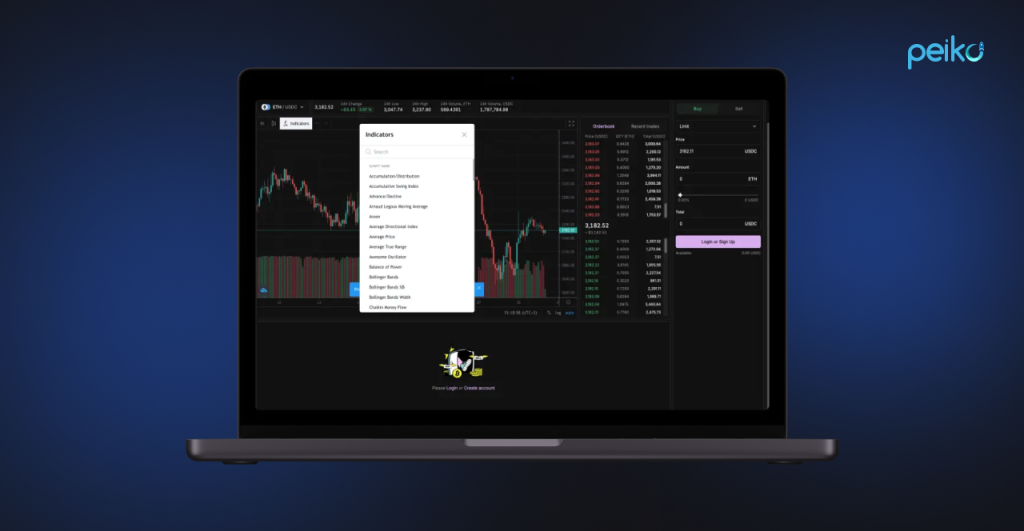
Additional advantages:
- Rapid and cost-effective platform deployment.
- Versatile architecture to accommodate increasing traffic from users.
- 24/7 real-time technical assistance and timely updates.
- Host-agnostic and supported on leading cloud platforms like Azure, AWS, and Google Cloud.
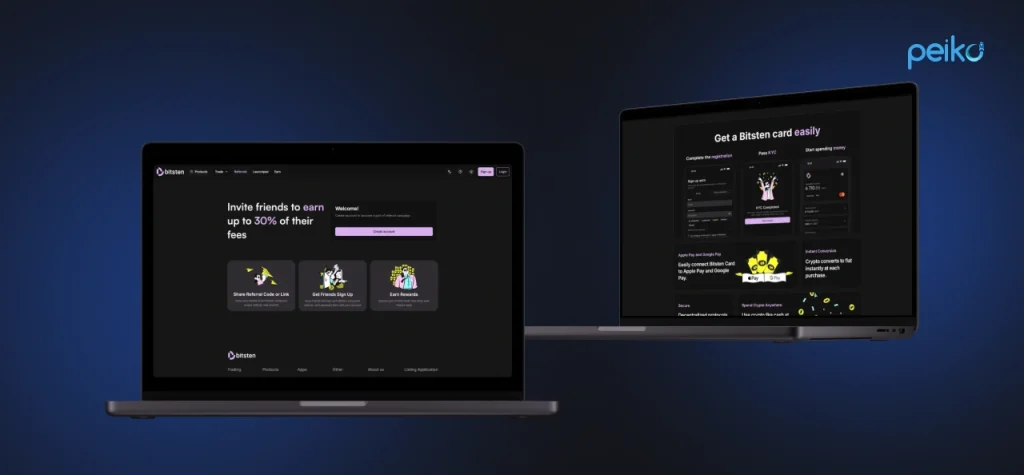
Conclusion
With the crypto market on fire, it’s the perfect time to get started on your crypto project, like a crypto exchange. With the white-label solution, you can have your exchange up and running immediately, start earning revenue sooner, and beat your competitors.
If you need a robust, customizable, and reliable crypto exchange solution, Peiko’s white-label offering is the ideal choice. Reach out to Peiko today to elevate your crypto business to the next level!
FAQ
A white-label in crypto refers to an entirely developed-out cryptocurrency exchange platform that can be rebranded and customized by firms to suit their own specific needs.
White-label crypto exchange prices differ, although the typical cost is much lower than building from scratch and is around $90,000.
A white-label digital wallet is a ready-to-use cryptocurrency wallet solution that can be rebranded and personalized by companies to offer their users secure storage and management of digital assets.
To start, you would partner with a reliable white label exchange platform provider, for example, Peiko, who could allow you to white-label and launch your project in a matter of weeks.
White-label crypto is an exchange platform that is developed by a provider but can be white-labeled and branded by a company to resell crypto services to its customers.









